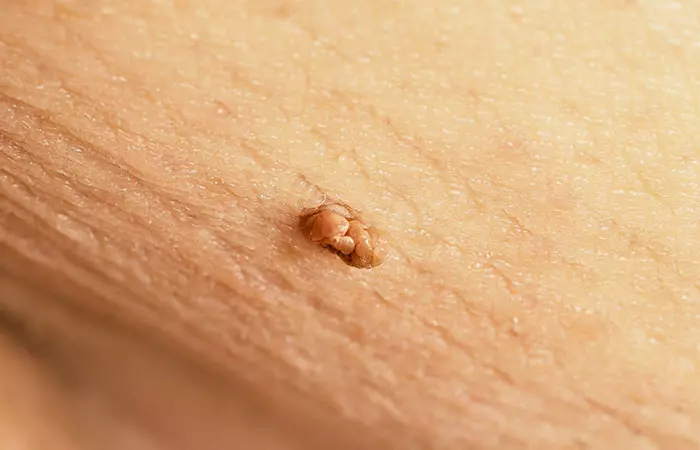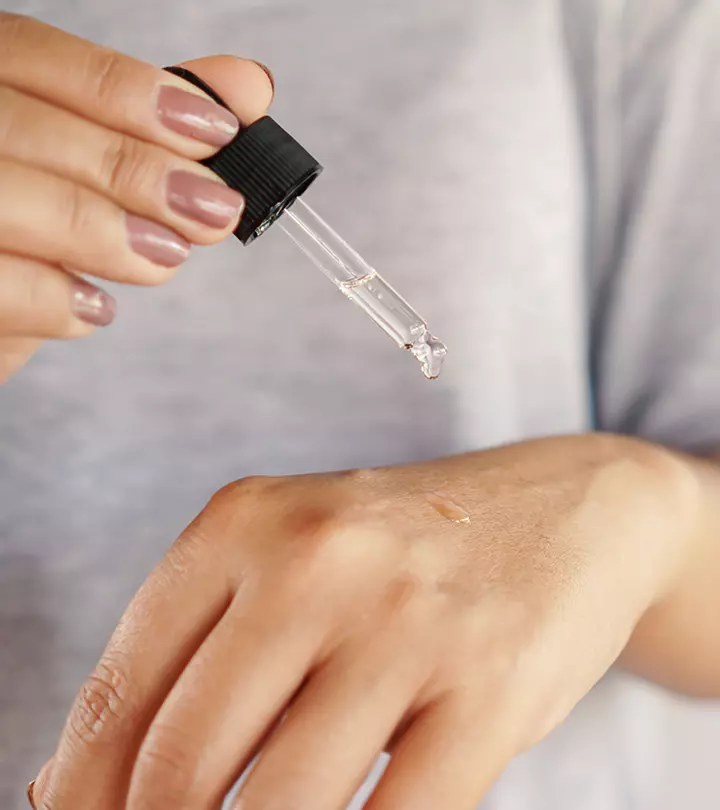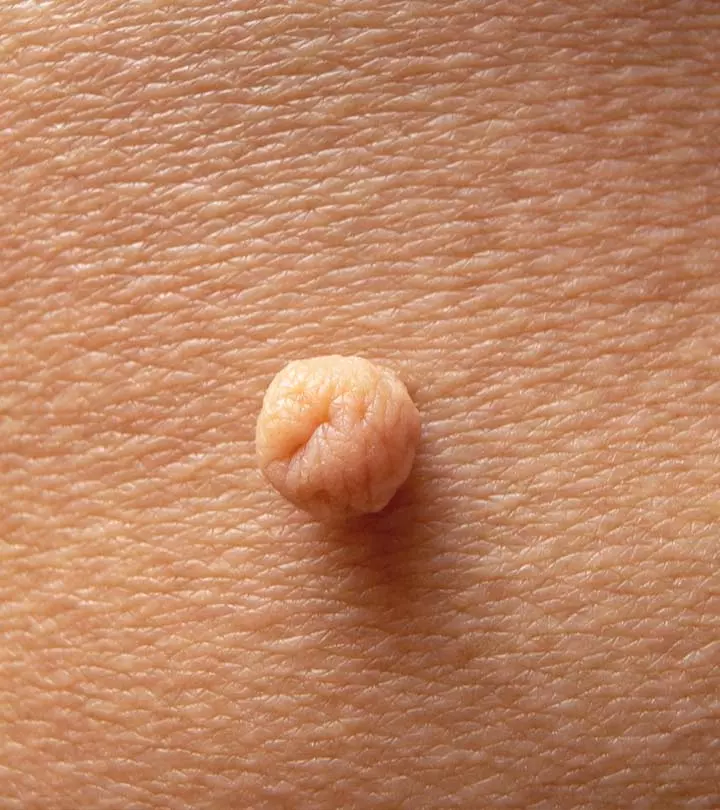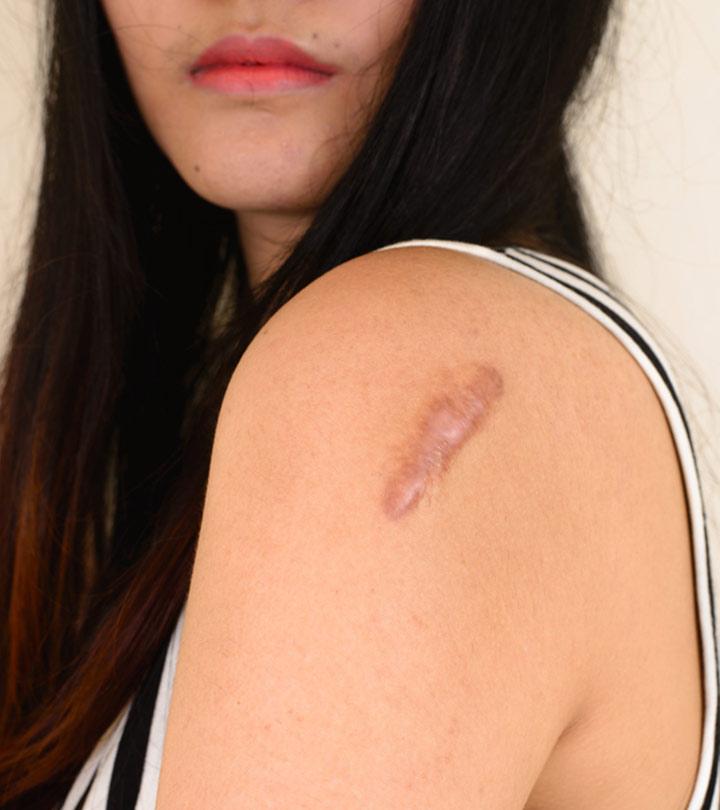Hymenal Skin Tags: Causes, Diagnosis, And Treatment
A few simple tips can help you manage those pesky growths effortlessly.

Image: Shutterstock
Hymenal skin tags are the tissue outgrowths at the vaginal entrance. These painless and harmless lesions can develop in any woman at any age. Most of these genital tags, warts, and papilloma do not cause any discomfort and disappear on their own. But, sometimes, they may persist and also cause other symptoms like swelling and bleeding.
Most women consider them a deformity and wish to be free of them. But how? Here, we discuss how to identify hymenal tags, their causes, and how you may get rid of them. Continue reading.
 Did You Know?
Did You Know?In This Article
What Are Hymenal Skin Tags?
The hymen, as we know, is a fleshy tissue at the vaginal opening. Its size and shape may vary among individuals. The skin tags that form when the hymen extends out or tears are called hymenal skin tags. These skin tags are small and usually do not cause any discomfort. But sometimes, they may lead to swelling and bleeding (1).
The first step to treating these skin tags is identifying them – as not all skin extensions at the hymen area are hymenal skin tags. Check the next section to learn more.
How To Identify Hymenal Skin Tags?

Hymenal skin tags are located at the opening of the vagina. A skin tag can be recognized by its peduncle. They are attached to the skin by a small stalk that measures between 2 and 10 millimeters in diameter. These skin tags can be curved, round and asymmetrical, or smooth in appearance. They may appear to be flesh-colored. Their skin tone may also be paler or darker than the surrounding skin. For instance, a twisted skin tag may appear darker due to the lack of blood flow.
But why do tags form at hymen? Keep reading to know.
What Causes Hymenal Skin Tags?

Friction may cause hymenal skin tags on the entrance of the vagina. The following are some of the most common causes of these genital skin tags (2):
- Sex
- Use of tampons
- Friction of underwear
- Masturbation
- Any injuries
Other causes may include (2):
- Pregnancy
- Vaginal delivery
- HPV
- Obesity
- Hormonal changes
In the next section, we discuss how hymenal skin tags are diagnosed. Keep reading.
How Are Hymenal Skin Tags Diagnosed?

Consult your doctor if you suspect you have hymenal skin tags. The doctor may suggest basic at-home solutions, such as an over-the-counter pain reliever or a cold compress.
Your doctor may recommend more testing for clarity on the origin of the tags. He may suggest tests like:
- Pap smear
- Pelvic exam
- Biopsy
These tests will help the doctor determine the seriousness of the condition.
Hymenal skin tags usually disappear on their own without any need for medical treatment. But, in some cases, their removal may warrant medical assistance.
How To Get Rid Of Hymenal Skin Tags?

If you have swelling or other pain accompanied by the tags, your doctor may suggest the following:
- To take over-the-counter pain relievers
- To use cold compresses
- To avoid vigorous physical activities
- To avoid any sexual activities
 Trivia
TriviaIf your symptoms are severe, the doctor may recommend surgical removal of the tag.
When To See A Doctor

See a doctor if you have any of the following symptoms:
- Swelling
- Bleeding
- New vaginal lesions
- Discomfort
Infographic: Reasons Behind Hymenal Skin Tags And Ways To Deal With Them
These lesions or outgrowths can develop at any time and prove to be quite painful. While they are mostly harmless and heal independently, they sometimes require extra care when they cause swelling and bleeding. Check out the infographic below to learn about the causes and ways to manage these tags. Illustration: StyleCraze Design Team
Most skin tags are harmless and do not affect your general health. While some may eventually fall off on their own, others may form in the same region. The tissue outgrowths near the vaginal opening are known as hymenal skin tags. Hymenal skin tags at the vaginal opening can be caused by friction and can develop in any vulva owner. They normally go away on their own without requiring medical attention. However, in some circumstances, you may require medical assistance to remove them. If you have swelling or bleeding, see an expert in gynecology right away.
Frequently Asked Questions
Are hymenal skin tags normal?
Yes, hymenal skin tags are extremely normal and pose no health risk.
How long do hymenal tags last?
Hymenal tags may last for days, weeks, or even years. Some tags may go away on their own, while others need to be removed.
Can hymenal skin tags affect sexual activity?
Hymenal skin tags are harmless and generally do not cause any problems or pain during sexual activity. However, in some rare cases, they may cause pain or discomfort during intercourse or any other physical activity.
Can hymenal skin tags be itchy?
Sometimes hymenal skin tags may cause itching in some individuals, especially if they are irritated or rubbed against any clothing or during any physical activities. However, if you experience persistent or severe itching, it’s best to seek medical advice.
Can a hymenal tag be cancerous?
Generally, hymenal skin tags are benign growths and non-cancerous. However, in rare cases, it can be cancerous. If you experience any unusual symptoms, pain, or discomfort, it is best to consult your healthcare professional.
Key Takeaways
- Hymenal skin tags are harmless skin tags that form on the hymen.
- They are attached to the skin by a small stalk that measures between 2 to 10 millimeters in diameter.
- Friction from sex, use of tampons, underwear, or masturbation may cause hymenal skin tags on the entrance of the vagina.
Illustration: Hymenal Skin Tags: Causes Diagnosis And Treatment

Image: Dall·E/StyleCraze Design Team
In this enlightening video, learn about hymenal skin tags and cervical tags, including their causes, symptoms, and available treatment options. Watch this video and enhance your understanding of these conditions for better health awareness.
References
Articles on StyleCraze are backed by verified information from peer-reviewed and academic research papers, reputed organizations, research institutions, and medical associations to ensure accuracy and relevance. Read our editorial policy to learn more.
- Skin Tags
https://pubmed.ncbi.nlm.nih.gov/31613504/ - Association between skin tags and insulin resistance
https://www.scielo.br/j/abd/a/CqSVYj6c7cXhRwVvgmvDppx/?lang=en
Read full bio of Dr. Madhuri Agarwal
Read full bio of Anjali Sayee
Read full bio of Swathi E


























Community Experiences
Join the conversation and become a part of our empowering community! Share your stories, experiences, and insights to connect with other beauty, lifestyle, and health enthusiasts.